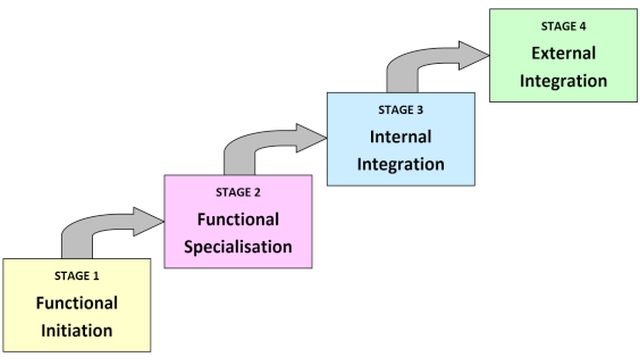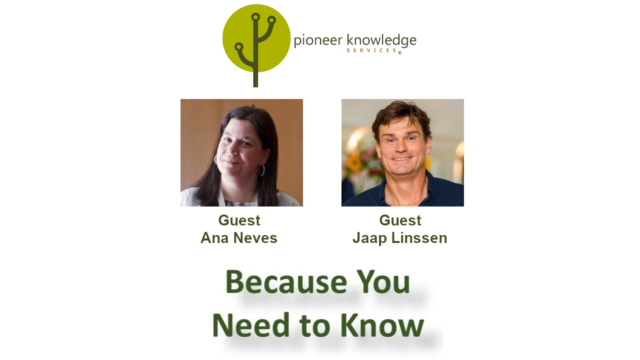
What does the research say about knowledge management maturity models?
Knowledge management (KM) maturity models seek to describe the different levels or stages of KM maturity in an organisation, with the aim of helping the organisation to assess its progress in KM program implementation. Several KM maturity models have been developed, most of which have a similar structure with some differences in the levels or stages of maturity.
However, as Stan Garfield documents in a blog post, there are divergent views across the knowledge management (KM) community in regard to the desirability of KM maturity models.
But what does the research say?
A recent systematic review1 has reviewed the academic literature with the aim of identifying the shortcomings of and suggested ways of improving KM maturity models, as well as the critical success factors of KM maturity. The systematic review involved a keyword search across the Web of Science, Scopus, and Google Scholar databases, and the application of selection criteria. This resulted in the identification of 28 relevant papers which were then analysed.
For the purposes of their analysis, the systematic review authors used the KM maturity model stages shown in Figure 1 below (and also reflected in the image above).

Shortcomings of KM maturity models
The systematic review found that KM maturity models (KMMMs) are influenced by two approaches: capability maturity models (CMM) or organisational life cycle (OLC).
Several shortcomings in KM maturity models were identified:
- The KMMM based on CMM presuppose the organization as an information-processing machine, disregarding specificities related to people, knowledge, and learning. These proposals expend too much effort on solving technology-related problems and do not pay enough heed to organizational culture, a key factor to KM.
- Models influenced by the [OLC] … have a linear, sequential, deterministic, and invariant developmental character. Despite being capable of satisfactorily defining some processes such as product development, these assumptions have been criticized for equating organizations to social organisms. Organizational theories inspired by biological analogies, though providing valuable information on the nature of the organization, are too “crude” to capture the intricacies of internal organization and its connection to KM.
- Approaches influenced by the seminal work of Greiner present theories geared to permanent growth. However, not all organizations share an interest in unrestricted growth. Some authors argue that the size of organizations has been defined too broadly to shed light on its relationship to organizational structure. This view also implies that new or small organizations are “stuck” at the first stage, meaning that, due to their small size, they would never be capable of reaching certain maturity levels.
- These models only acknowledge maturity at the final developmental stage, a likely characteristic of the development of a software program or a product (e.g., a car), but probably not of an organization and its management practices, since organizations of different natures may require different KM levels to meet their goals, especially in view of the trade-off between costs and benefits. Not all organizations aspire to reach the topmost KMM level. More often than not, costs outweigh the benefits of reaching the highest KMM level; sometimes it is more advantageous to reach an intermediate level.
- The small volume of studies and empirical research indicates that the area has not been widely explored. Existing KMMMs have been criticized because most of them have not been validated.
- Lastly, existing KMMM have been developed based on different theories and methods; they also differ greatly as regards focus and scope. Each model postulates different sets of features, which suggests that these factors have not been well identified nor thoroughly understood up till now. This fact makes the comparison, evaluation, and application of these models very difficult.
Suggested ways of improving KM maturity models
To improve KM maturity models (KMMMs), the systematic review authors recommend that the following research is carried out:
- “Consider the specificities of KM as a process (not a product) and companies as social organization and power relations when [analyzing] … KMMM influenced by CMM, focusing on culture and people necessities beyond technology aspects”
- Develop empirical studies and test theoretical KMMMs to explore answers to the following knowledge gaps in regard to KMMMs: “It is necessary to investigate if all different types of organizations develop the KM stages exactly the same way. [Does] KMMM … have a [linear,] … sequential, deterministic, invariant and oriented by growth in size behavior? Could an organization skip a stage? Could an organization integrate the external network on KM practices before institutionalize KM on organizational culture? Could an organization an organization aspires just institutionalize their KM practices and not achieve the last stage? Could a small, a medium and a large corporation achieve the same stage of KM, because stages are related to KM practice, not to the size of the organization?”
Critical success factors of KM maturity
From their systematic review, the authors identified the critical success factors of KM maturity listed in Figure 2 below.

Header image: Stages of KM maturity. Prepared by RealKM Magazine from “Table 1 Stages of KM” in Escrivão & Silva 2019. CC BY-ND 4.0.
Reference:
- Escrivão, G., & Silva, S. L. D. (2019). Knowledge management maturity models: identification of gaps and improvement proposal. Gestão & Produção, 26(3). ↩
Also published on Medium.




